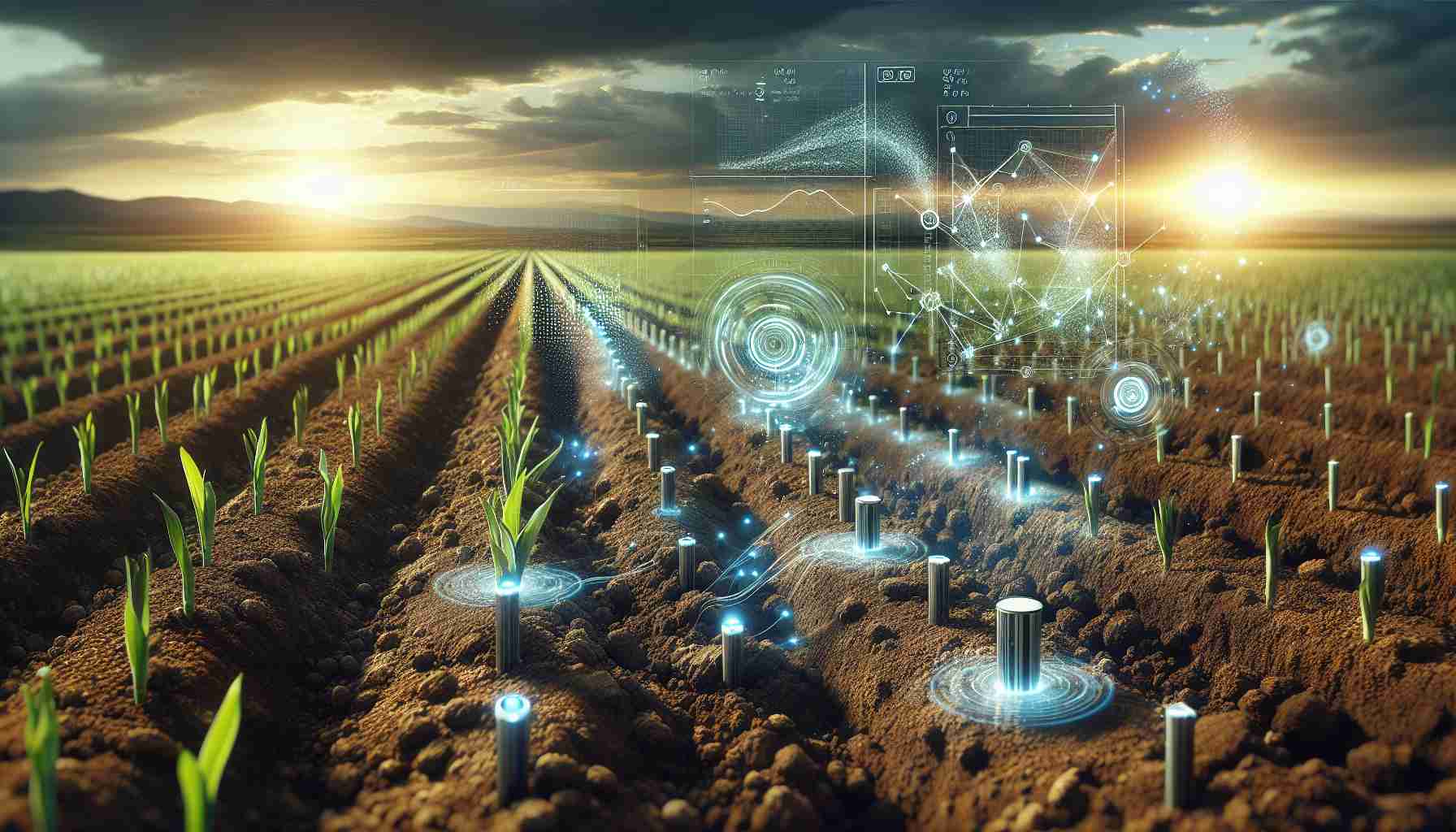- Murata Manufacturing’s soil sensors enhance crop management through real-time monitoring.
- Daily data collection on soil moisture and nutrients leads to healthier crops and better yields.
- Farmers receive instant alerts for optimal watering times via smartphones, promoting resource conservation.
- Precision agriculture coupled with smart technology revolutionizes irrigation and nutrient management.
- Adopting these innovations boosts farm profitability and supports sustainable farming practices.
- The integration of smart sensors signifies a major advancement toward a connected and eco-friendly agricultural ecosystem.
Step into the future of agriculture with Murata Manufacturing’s groundbreaking soil sensors, poised to transform the way farmers manage their crops. Imagine fields brimming with life, thanks to advanced technology that continuously monitors soil and water quality. These innovative sensors, now powering TERRACE MILE, are a game-changer for sustainable farming practices.
Every day, the sensors collect crucial data on moisture levels and nutrient content, providing farmers with real-time insights that can lead to better yields and healthier crops. Envision farmers, equipped with smartphones, instantly receiving alerts about optimal watering times, allowing them to conserve resources while maximizing productivity. This cutting-edge technology not only enhances crop performance but also supports eco-friendly practices, paving the way for a greener planet.
Utilizing these soil sensors, farmers can pinpoint issues before they escalate, revolutionizing their approach to irrigation and nutrient management. The combination of precision agriculture and smart technology not only boosts profitability but also promotes responsible farming.
The takeaway? Embracing these technological advancements not only benefits individual farms but also contributes to a more sustainable agricultural ecosystem. The future of farming is here, and it’s more connected than ever. Dive into the world of smart sensors and discover how they are cultivating smarter, more productive farming for everyone.
Revolutionizing Agriculture: The Smart Sensor Era
## Introduction to Smart Soil Sensors
Murata Manufacturing’s advanced soil sensors are redefining agricultural practices by offering farmers a reliable method to enhance productivity and sustainability. This technology is not merely an evolution; it represents a seismic shift in how agriculture can be practiced efficiently while caring for the environment.
Key Features of Murata’s Soil Sensors
1. Real-time Monitoring: These sensors continuously gather data on soil moisture, pH levels, and nutrient concentrations, allowing farmers to make informed decisions instantly.
2. Mobile Integration: The sensors are compatible with mobile applications, providing alerts and data directly to farmers’ smartphones. This feature fosters an agile farming strategy by enabling immediate responses to changing conditions.
3. Data Analytics: Collected data is not just relayed; advanced analytics processes it to provide actionable insights, further enhancing decision-making.
4. Sustainability Focus: By optimizing water usage and minimizing chemical runoff, these sensors support more ethical farming practices, contributing to a healthier ecosystem.
How It Affects Crop Yields and Resource Management
With ongoing climate change and resource scarcity, the ability to optimize input amounts directly impacts farm sustainability. Murata’s sensors facilitate micro-management of crop needs, enabling:
– Precision Irrigation: Timely watering based on real soil data helps conserve water and energy.
– Nutrient Management: Fertilization is tailored according to real-time needs, reducing waste and pollution.
Trends and Insights in Smart Agriculture
The integration of smart technologies in agriculture is trending upwards. The market for precision farming solutions is projected to grow significantly, with advancements in IoT and AI further synergizing with these soil sensors.
Pros and Cons of using Smart Soil Sensors
Pros:
– Increased yield potential through optimized resource management.
– Reduced environmental impact due to precise application of nutrients and water.
– Enhanced data-driven decision-making capabilities.
Cons:
– Initial setup costs may be high for small-scale farmers.
– Dependence on technology could be challenging for less tech-savvy farmers.
– Data privacy and cyber security risks need to be considered.
Limitations of Soil Sensors
Despite their numerous benefits, the technology does have limitations. Issues such as sensor calibration, maintenance costs, and the need for constant internet access can hinder their utility, especially in remote areas.
## Most Important Questions About Soil Sensors
1. What are the long-term benefits of using soil sensors in agriculture?
– Long-term benefits include improved soil health, greater efficiency in resource usage, enhanced crop resilience against climate variability, and ultimately more sustainable farming practices that protect ecosystems and biodiversity.
2. How does real-time data collection improve farm management?
– Real-time data allows farmers to respond quickly to changing soil conditions, preventing issues from escalating. This approach is proactive rather than reactive, optimizing farm operations and boosting overall yields.
3. What security measures should be considered when utilizing smart agriculture technologies?
– Farmers should ensure that any data collected by the sensors is encrypted, access-controlled, and regularly reviewed to prevent unauthorized access. Implementing robust cybersecurity protocols is crucial to protect sensitive farming data.
Conclusion
Murata Manufacturing’s soil sensors are ushering in a new era of agriculture that optimizes productivity while emphasizing sustainability. With real-time monitoring and smart technology integration, farmers can thrive in a rapidly changing environmental landscape. Embracing these innovations not only assures better yields but also contributes positively to the planet.
For more insights into agricultural technology, visit Murata Manufacturing.
